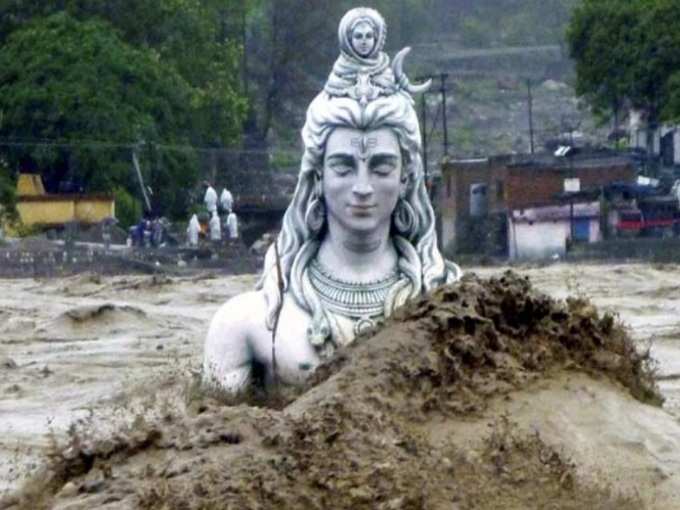
The June 2013 disaster in
While heavy rain (more than 375% of normal rainfall) inundated Uttarakhand and the surrounding areas, it also led to the melting of the Chorabari Glacier and the
Government officials committed many errors that had a direct bearing on the tragedy:
· Early weather warnings went unheeded. Otherwise, the loss of human life would have been lower.
· Haphazard development with hotels near the waterways, extensive tunnelling for badly planned roads and more than 70 hydroelectric projects have created a serious environmental imbalance.
· Private sources put it to over 5,000 deaths. As the flooding occurred during peak pilgrimage season, more than 70,000 pilgrims were stranded with little or no food for over three days.
Total economic loss is estimated at Rs 20,000 crore. The damage to infrastructure such as roads, hydro projects and housing will be difficult to overcome. As tourism accounts for almost 30% of Uttarakhand’s GDP, road and other infrastructural damage means the state government has to ask tourists to stay away, leading to loss of economic activities.
Disaster management
While the
Local people should be made aware of the problems likely to occur and must be taught how to respond to those. Each region or locality should have a rescue shelter and a command network in place. In other words, public awareness of ecology and environmental issues is a must. The government has to work with the people to protect the environment. Also, weather warnings should be taken seriously and government officials should focus more on prevention in order to minimise such losses.
A comprehensive Himalayan environment and ecology plan covering all the Indian states concerned should be drawn up and implemented. Experts even advocate an international policy in co-operation with other countries such as China, Nepal and Bhutan.
Uttarakhand today is focusing on rebuilding its infrastructure and preventing further ecological damage. The state has already reconstructed a major part of its roads, bridges and communication infrastructure. However, this should top the priority list now as transport and communication are extremely vital to keep the economy going in this mountain state.
Only last month, the government reopened the Char Dham Yatra for the pilgrims, which can revive the tourism-based economy to some extent, bringing in the badly needed tourist money to the state. The government has also been criticised for the slow pace in rebuilding houses and infrastructure, and thus generating employment.
The state government has come under fire for the irregular disbursal of compensation – Rs 2 lakh for every affected family and Rs 3,000 per month for two years as rental compensation to each of the 3,320 families that lost their houses. An additional compensation of Rs 5 lakh for building a house on the land owned by a family did not help either. That is because the families that lost their homes in the floods found it difficult to prove land ownership as all their belongings had been washed away. In many cases, the land itself no longer exists and it is still unclear where the new dwellings can be built. Understandably, the government will have to reassess and speed up the relief and rehabilitation process for genuine sufferers.
Additionally, the government is taking steps to ensure proper development of watershed areas, water supply and sanitation. Loans to the tune of $121.20 million for a decentralised watershed development project and $24 million for rural sanitation and water supply have been obtained from the World Bank.
Employment issues
Uttarakhand is now witnessing third highest level of unemployment across the country. The state has a largely rural economy and last year’s dislocation of the tourism industry and loss of homes have increased unemployment and forced many to migrate.
The failure of industrialisation also contributes to unemployment in the state. The government has to first ensure that the rural areas have access to sufficient clean water, land and clean environment. It should also actively support local agriculture and other employment-generating activities.
The government is currently working towards better forest management and planned hydroelectricity management. Two of the country’s major rivers, the Ganga and the Yamuna, originate in Uttarakhand and responsible handling of these river projects is not only crucial for the state but for the entire country.
However, Uttarakhand is gradually overcoming the impact of the natural disaster that struck last year and rebuilding itself. But how fast it can be back on the prosperity track is the key question now.